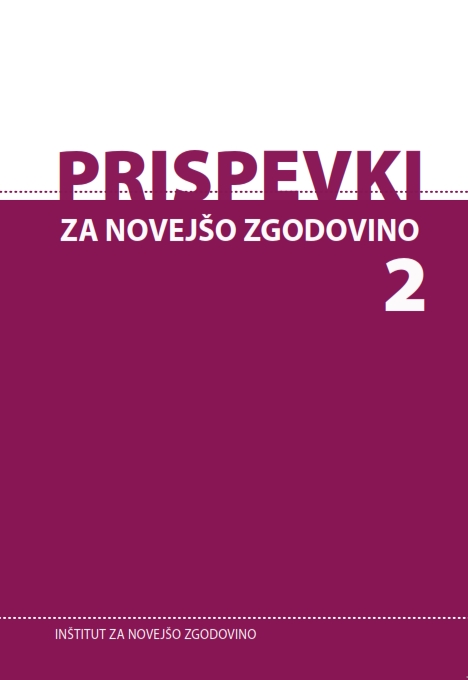»However, the Language Here is Changing Gradually, and in the Presence of so Many Local Dialects the Croatian and its Kindred Slovenian World Cannot Be Separated Very Precisely« – Drawing the Slovenian-Croatian National Border in the Territory of the
»However, the Language Here is Changing Gradually, and in the Presence of so Many Local Dialects the Croatian and its Kindred Slovenian World Cannot Be Separated Very Precisely« – Drawing the Slovenian-Croatian National Border in the Territory of the
Author(s): Jernej KosiSubject(s): Civil Society, Political history, Social history, 19th Century, Geopolitics
Published by: Inštitut za novejšo zgodovino
Keywords: national border; Slovenian national territory; Prekmurje; Slovenian national movement; Croats and Slovenians;
Summary/Abstract: The article analyses the process involved in the formation of the idea to separate the »Slovenian« and »Croatian« national territory in the west of the Kingdom of Hungary. The concept was initially articulated as a linguistic premise in the works written by the famous linguist Jernej Kopitar, who understood the territory of the today’s Prekmurje region as an area where Slovenian language was spoken. As of the middle of the 19th century, Kopitar’s classification had been appropriated by the Slovenian national movement, which presupposed that the speakers of the Slovenian language in the Kingdom of Hungary were also members of the envisioned Slovenian community. In this context the Slovenian linguistic – national border was, in the middle of the 19th century, depicted on a map for the first time (Peter Kozler). In just a few decades, the idea of the national demarcation line in the today’s Prekmurje, supposedly separating Slovenians from Croats at the river Mura, had strengthened considerably among the Slovenian national activists in the Cisleithanian lands. After the dissolution of Austro-Hungary and the signing of the Treaty of Trianion, this line in fact became a border between the Slovenian and the neighbouring Croatian national space.
Journal: Prispevki za novejšo zgodovino (before 1960: Prispevki za zgodovino delavskega gibanja)
- Issue Year: 57/2017
- Issue No: 2
- Page Range: 33-50
- Page Count: 18
- Language: English

